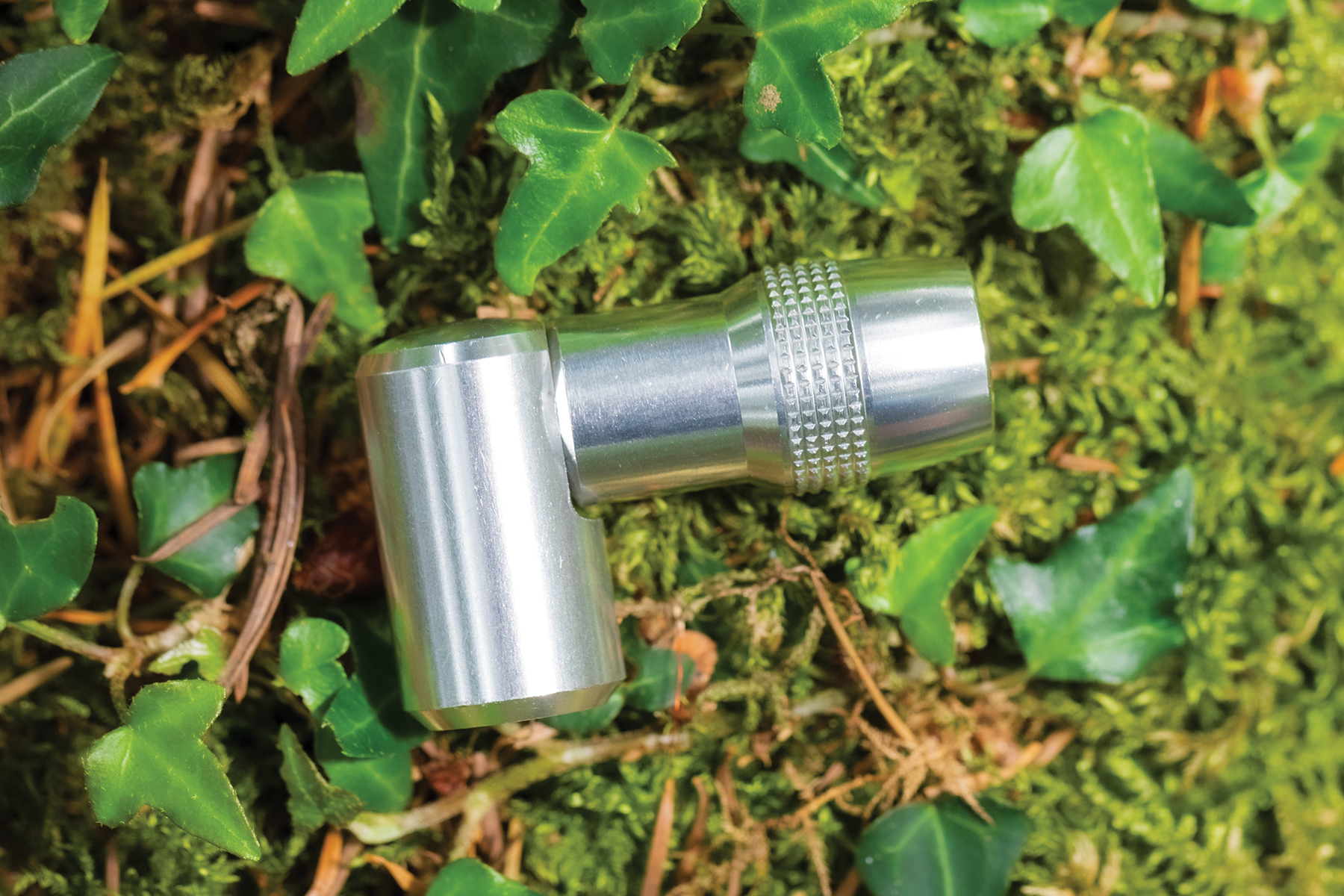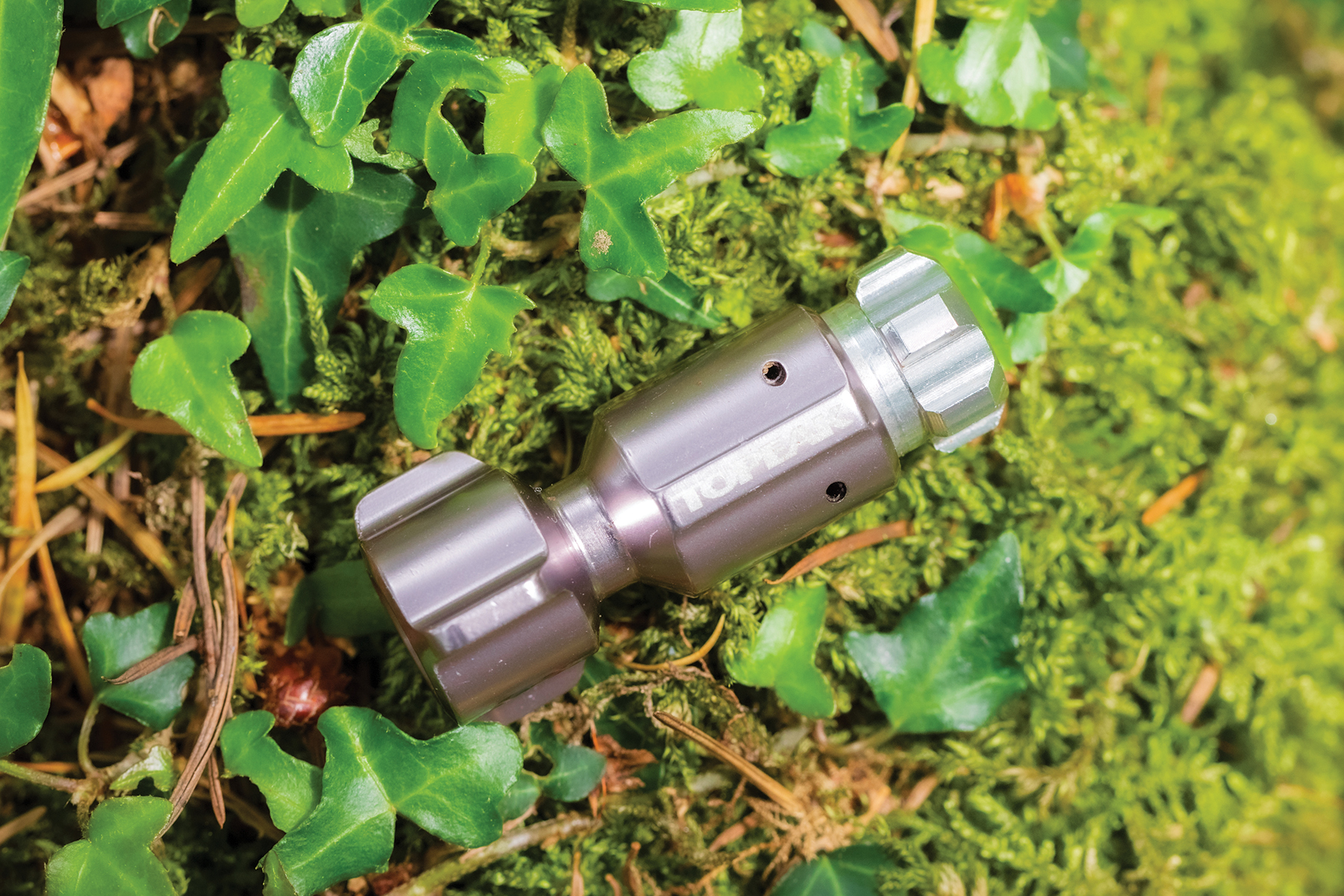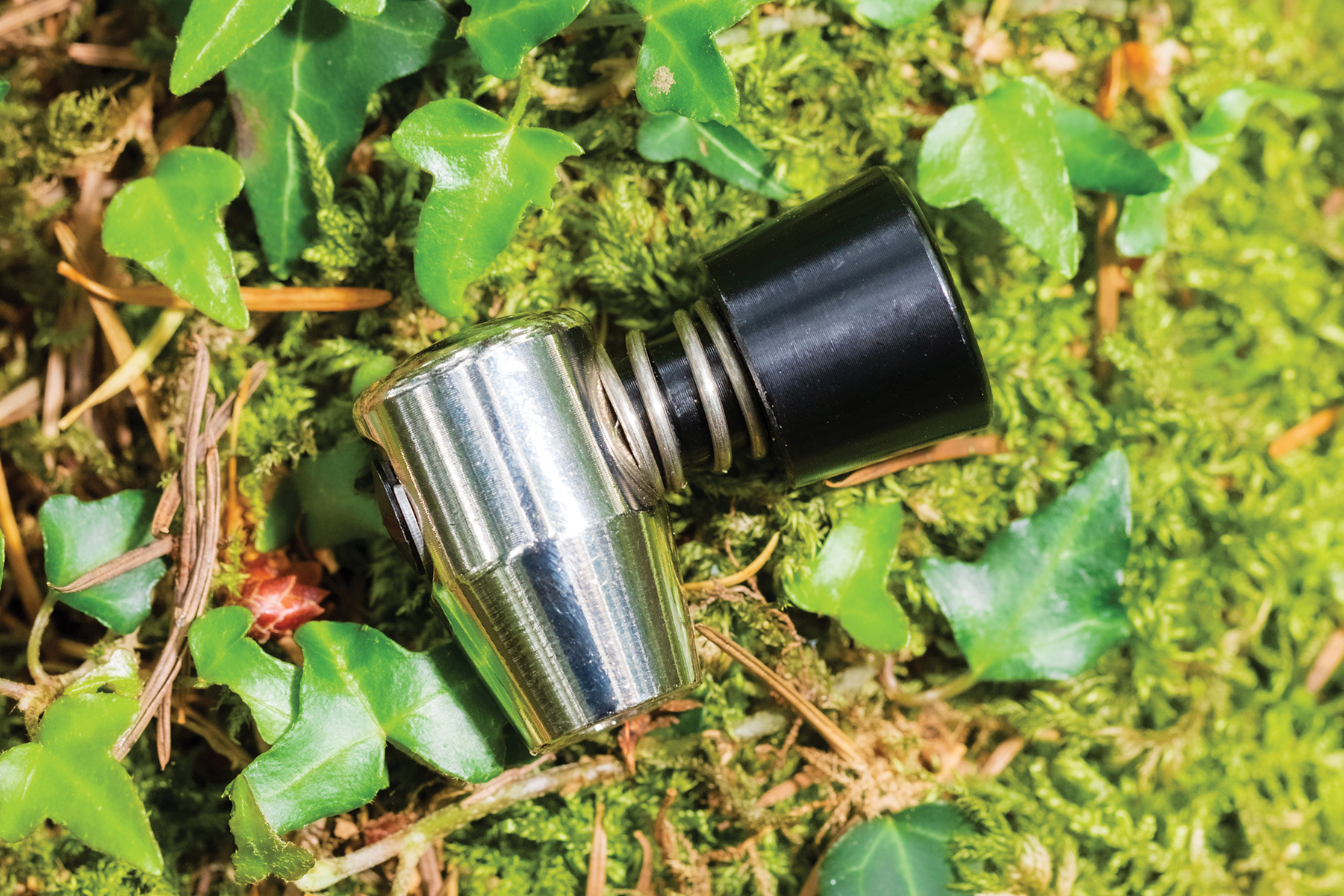The easiest way to fill a tyre in a flash
The best CO2 inflators inflate your tyres quicker than bike pumps and take up less room in your saddle bag.
The CO2 inflator was originally a favourite among mountain bike racers. While they’re still common on the trails, they’re also popular with road and gravel riders in search of fast inflation for inner tubes or tubeless tyres.
These devices won’t solve all your problems. You’ll still need to know how to fix a puncture and how to pump up a tyre before heading out for ride.
But if you are looking for speedy inflation, we’ve tested some of the best CO2 inflators to help you decide which to go for.
You can also jump to our buyer’s guide where we answer common questions about CO2 inflators, such as how to use them and what size canisters you’ll need.
Best CO2 inflators 2024, as rated by our expert testers
Lezyne Control Drive
- £28 / $32 / AU$40 as tested
- Valve type: Presta or Schrader
- Pros: High flow rate
- Cons: Large and heavy
If it’s rapid inflation you’re after, the Lezyne Control Drive is easily the best CO2 inflator.
The Control Drive’s extremely high flow rate will have you back on the trail in no time.
It gives you the best chance here to reseat a tubeless tyre on the rim too.
You can control the rate of gas release with a simple knob.
The secure push-on inflator works with both Presta and Schrader valves.
It’s expensive, big and heavy, which makes it more awkward to store on a bike or in a pocket – although we’re talking a matter of grams here.
Specialized SWAT Mini

- £10 / $12 as tested
- Valve type: Presta only
- Pros: Small and light
- Cons: Hard to screw canisters to head
The SWAT Mini CO2 inflator is small and light, yet packs a big punch.
It fits securely onto Presta valves then the gas is released via a simple unthread-the-canister process, with a good flow rate.
A plastic spacer is supplied, which allows you to attach a canister to the inflator for convenient storage without piercing its seal.
We found it harder to screw canisters into the Specialized inflator than any other here – it has a tight fit – and it only works with Presta valves.
The price is for the inflator head only – cartridges and sleeves cost extra.
Birzman Roar Control

- £20 as tested
- Valve type: Presta or Schrader
- Pros: Three cartridges included
- Cons: Slightly fiddly to use
The Birzman Roar Control CO2 inflator is another screw-on design, which attaches tightly and securely to the valve.
To control the flow of gas, you simply unscrew or tighten the cartridge. It dispenses the CO2 at a decent rate.
It’s not as intuitive to use as a push-on or tap-equipped inflator.
Although small, it has one of the longest chucks on test, which can make it a slightly more awkward shape to carry in your pocket or stash on your bike.
But it’s compact and lightweight, and its simple design means there’s less to go wrong.
The price includes three 16g cartridges and a protective sleeve.
Peaty’s Holeshot

- £31.99 / $40.99 / AU$49.95 as tested
- Valve type: Presta only
- Pros: Inline design for claimed faster flow
- Cons: Expensive, but includes two cartridges and a sleeve
Peaty’s uses an inline design with a spring-loaded valve to regulate the flow into your tyre. It reckons that removing the 90-degree angle leads to faster flow and less icing. The inflator is designed to be used with the valve at the bottom of the wheel, which again is claimed to speed things up.
Other claimed benefits include a lower chance of damaging the valve core and easier stowage. The inflator is supplied with silicone sleeve insulation too.
Peaty’s sells the Holeshot as a kit with either two 16g road/gravel or two 25g MTB CO2 cartridges and, in the UK, as a head only. There are 12 different colours to match your Chris King hubs.
Topeak Micro AirBooster

- £23 / AU$45 as tested
- Valve type: Presta or Schrader
- Pros: Compact, press-to-control design
- Cons: Slower to inflate than alternatives
The Topeak Micro AirBooster’s straight, in-line design makes it one of the more compact CO2 inflators.
You control the flow of gas by depressing the inflator head, but the action is lighter.
Being a straight, push-on design, it was a little tricky to fit the Micro AirBooster between the wheel spokes with the canister in place.
It also took longer to empty the cartridge than the best CO2 inflators.
It fits both Presta and Schrader valves, features a secure, no-leak fit and comes with both a sleeve and a 25g canister.
Genuine Innovations AirChuck Elite

- £25 / $30 as tested
- Valve type: Presta or Schrader
- Pros: Push-to-inflate design
- Cons: No protective sleeve for cartridge
With its large, easy-to-fit head, the Genuine Innovations AirChuck Elite CO2 inflator connects securely to both Presta and Schrader valves.
Two canisters (one 20g, one 16g) are included.
Genuine Innovations’ Push-to-inflate technology means you don’t have to fiddle around with the cartridge once it’s installed.
The spring that you have to compress to initiate the flow of gas is firm and it takes quite a bit of strength to hold it down.
Airflow isn’t the fastest either, and there’s no insulating sleeve.
Why you can trust BikeRadar
BikeRadar has been an authority on bikes and cycling tech since its inception in 2007, delivering the world’s best riding advice.
We have experts testing all types of bikes, parts, clothing and accessories, from road, mountain and gravel bikes to commuting, bikepacking and electric bikes.
Our reviews are always editorially independent – with no exceptions. Our reviewers comprehensively test all products in the real world, always reflecting on performance, value and the wider market when delivering their verdicts and review ratings.
We have more than 15,000 product reviews available at your fingertips, as well as expert buying, maintenance, training, skills, health and fitness advice.
Our annual Bike of the Year test is an industry benchmark and the BikeRadar team consists of some of the most experienced riders and testers in the business.
CO2 inflator buyer’s guide
What is a CO2 inflator?
CO2 inflators are a compact, lightweight and quick way of reinflating your tyre after a puncture.
As the name suggests, CO2 inflators use carbon dioxide to inflate your tyres. The CO2 comes compressed in small canisters, that thread onto the inflator head before being released into the tyre through the valve. The CO2 canisters are single-use only.
What to look for in a CO2 inflator
CO2 inflators are relatively small and simple pieces of kit. However, there are a few key features to look out for.
Size
As a last-resort option for reinflating a punctured tyre, CO2 inflators are one of those tools you won’t use often, yet you won’t want to be without one when you need one.
Therefore, choosing an inflator with a compact design will allow you to pop it into your tool roll, jersey pocket, saddle bag or frame bag and forget about it until you need it.
Ease of use
The last thing you want is to faff around with a complicated tool when fixing a puncture.
A wide wide metal head makes it easy to screw the CO2 cartridges in even with gloves. Once you’ve screwed in the cartridge a secure thread and seal ensures there’s no leaking from the unit, meaning you could pre-install the cartridge ahead of a race or event where time is of the essence.
A dual Presta and Schrader valve head is also a bonus. You won’t have to worry about which setting you left your inflator on and risk wasting a valuable cartridge.
Finally, a button or dial for controlling the flow of CO2 allows for a more accurate fine-tuning of tyre pressure.
How to use a CO2 inflator
Using a CO2 inflator is a simple process, requiring only two steps.
- Screw your CO2 canister onto the inflator head. Most inflators or canisters will come with a neoprene sleeve to slide onto the canister. This will protect you from freeze burns as the metal canister drops drastically in temperature as the gas is depressurised.
- Press or thread the inflator head onto your valve and release the gas until the canister is empty or your desired pressure is reached.
Once you get back home, you should pump your tyre up with air, because the CO2 particles will leak through the casing of your tyre quickly.
What size CO2 canister do I need?
CO2 canisters come in 16g, 20g or 25g sizes. Naturally, bigger canisters deliver more gas.
Most road and gravel riders will reach a suitable tyre pressure with a smaller 16g canister.
Some high-volume mountain bike tyres may require more gas to reach a rideable tyre pressure.
CO2 inflators vs pumps
CO2 inflators will get your tyre back up to pressure faster and easier than any pump. However, they also have their drawbacks.
Relying on single-use canisters, CO2 inflators involve a recurring cost of roughly £0.50-£1 per use and lead to waste. They also lack a way of accurately gauging tyre pressure (unless you’re also carrying a tyre pressure gauge).
On the other hand, mini pumps are a dependable way of accurately and easily inflating your tyres repeatedly. You can find pumps with a CO2 head, allowing fast inflation but providing the pump as a backup.
You can also buy multitools with an inflator head in their armoury, such as the Lezyne Rap II CO2, which means there’s one less thing to carry.
If you’re looking for a small and lightweight way of reinflating your tyres in an emergency, CO2 inflators tick the boxes at a cost. But for day-to-day use, we recommend one of the best mini pumps.